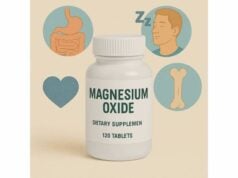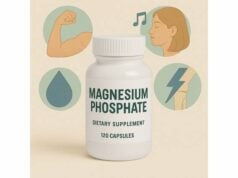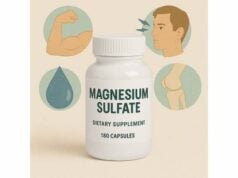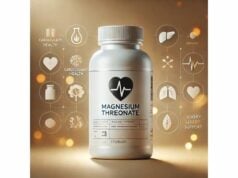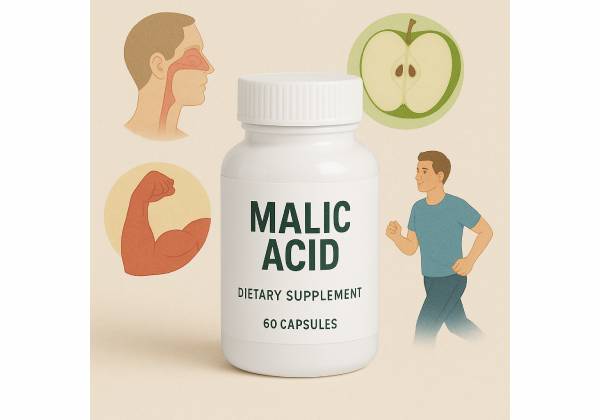
Malic acid is a tart-tasting organic acid found naturally in apples, berries, and many other fruits. Inside the body, its biologically active L-form (L-malic acid) is part of the Krebs (citric acid) cycle—the engine that helps cells turn food into usable energy (ATP). Because of this central role, malic acid shows up in several practical contexts: it is a common food acidulant that sharpens flavor and helps stabilize pH; a gentle alpha-hydroxy acid (AHA) in skincare; and a component of certain oral sprays used for dry mouth (xerostomia). As a supplement—often paired with magnesium (magnesium malate)—it is marketed to support energy and muscle comfort, though the clinical evidence is mixed and highly context-dependent. This guide explains what malic acid does, where it can reasonably help, how to use it safely (from oral intake to topical skincare), and who should skip it. You will also find plain-language dosing guidance, smart troubleshooting tips to protect tooth enamel and the gut, and a balanced look at the research so you can decide where malic acid fits for you.
Quick Overview
- Supports cellular energy production and may ease exercise-related muscle discomfort.
- 1% malic acid oral spray can improve dry mouth symptoms in short-term use.
- Typical oral supplemental intake: 600–2,400 mg/day (often as magnesium malate), with food.
- Acidic nature can irritate teeth and gut; avoid undissolved powders and rinse the mouth after sour products.
- Avoid high-dose use if you have active reflux, sensitive teeth, significant kidney disease, or you are giving to young children.
Table of Contents
- What is malic acid and how it works
- Proven benefits and where it helps
- How to use malic acid correctly
- How much malic acid per day
- Common mistakes and troubleshooting
- Side effects, interactions, and safety
What is malic acid and how it works
Malic acid (chemically, 2-hydroxybutanedioic acid) is a dicarboxylic acid that exists in L- and D-isomers; the L-form is the physiologic version used in energy metabolism. In living cells, L-malate sits near the end of the Krebs cycle, where it is oxidized to oxaloacetate by malate dehydrogenase. This step helps regenerate NADH, which fuels the electron transport chain to produce ATP. In simple terms: malic acid helps keep the cell’s “power plants” running, which is why you’ll often see it mentioned in energy-support supplements and sports nutrition formulations.
Beyond metabolism, malic acid’s acidity (low pH) underpins several practical uses:
- Food technology: It enhances sourness, stabilizes pH, and can improve microbial shelf life in beverages, candies, and fruit products. Regulatory agencies specify good-manufacturing-practice limits for how much can be added to various foods.
- Oral care and salivary support: Low concentrations (typically around 1%) in oral sprays can stimulate salivary flow in people with dry mouth. The mechanism is straightforward: a brief, safe acidic stimulus can trigger gustatory salivation, helping moisten the mouth and improve comfort.
- Skincare (AHA): As an alpha-hydroxy acid, malic acid can gently loosen the bonds between dead skin cells (desmosomes) to support smoothness and brightness. Compared to glycolic acid, malic acid has a larger molecular size, which can translate to slightly slower penetration and a milder feel—useful for sensitive or combination skin.
It is also common to see magnesium malate on supplement labels. This is simply magnesium bound to malate. The magnesium provides an essential mineral for muscle and nerve function, while the malate provides the organic acid counterpart. Some users choose magnesium malate for “two-for-one” convenience; others prefer separate forms. Either way, read labels carefully to distinguish elemental magnesium (mg) from malic acid (mg), as products often list both.
Finally, note that malic acid in foods and beverages is safe at typical levels, but its acidity means it can erode enamel or irritate the gut if used improperly. The rest of this guide focuses on where malic acid helps, how to minimize risks, and how to match the form and dose to your goal.
Proven benefits and where it helps
1) Short-term relief for dry mouth (xerostomia).
Multiple clinical trials and a recent meta-analysis report that 1% malic acid in a sialogogue spray can improve dry mouth symptoms and increase unstimulated salivary flow in the short term (typically over about two weeks). This can be especially helpful for medication-induced dryness or conditions with reduced salivary output. While these sprays do not treat the underlying cause, they offer practical symptom control and can improve oral comfort and quality of life. As with any acidic product used intraorally, good technique matters: aim for the cheeks or tongue (not teeth), use short courses, and rinse with water after meals to protect enamel.
2) Gentle resurfacing in skincare.
Like other AHAs, malic acid supports smoother texture, improved radiance, and better absorption of follow-up serums by accelerating controlled exfoliation at the stratum corneum. It is often found in combination AHA serums or toners. For at-home use, look for leave-on products up to ~10% AHA at pH ≥3.5, or milder cleansers for sensitive skin. Benefits accrue gradually over weeks: brighter tone, refined look of fine lines, and more even texture. Always pair with daily broad-spectrum sunscreen, because AHA use increases sun sensitivity. For melasma or deeper wrinkles, in-office peels with higher AHA strengths belong in a professional setting—not DIY.
3) Everyday energy support (contextual).
Because malate participates in the Krebs cycle and the malate–aspartate shuttle (important for moving reducing equivalents across mitochondrial membranes), some users report steadier energy with malic acid, especially when paired with magnesium. Small pilot work in fibromyalgia used malic acid plus magnesium, but blinded data at low doses did not show a clear effect; improvements appeared only during longer, open-label, higher-dose phases. More recent reviews suggest that magnesium itself may help some fibromyalgia symptoms, while malic acid’s direct contribution remains uncertain. Practically speaking, if you choose magnesium malate for general energy or muscle comfort, assess benefit after 6–8 weeks, and adjust course if no meaningful change.
4) Taste and GI tolerance in sports nutrition.
Malic acid is sometimes combined with amino acids (e.g., citrulline malate) for flavor and solubility, as well as to support buffering capacity during exercise. Although “malate” is present in such products, most of the performance evidence—where it exists—relates to the amino acid itself. If your interest is purely sports performance, choose products with transparent labeling for both active amounts and accompanying acids.
Where expectations should be modest.
Malic acid is not a cure for chronic fatigue or a stand-alone solution for chronic pain. It does not build muscle, burn fat, or reverse aging. It can, however, support comfort and function in targeted ways: easing dry mouth, gently refining skin texture, and contributing a palatable sourness to functional beverages or electrolyte mixes.
How to use malic acid correctly
Match the form to the goal.
- For dry mouth: Use a 1% malic acid sialogogue spray for short courses when symptoms flare. Aim sprays toward the cheeks or tongue, not directly onto teeth. Let it mix with saliva, then swallow naturally. For ongoing dryness (medication-related, Sjögren’s, radiation), build a broader plan: frequent sips of water, sugar-free xylitol gum or lozenges, room humidification at night, and fluoride toothpaste to protect enamel.
- For skincare: Start with a low-to-moderate strength AHA (often a blend including malic acid). Apply after cleansing on completely dry skin, then moisturize. Begin 2–3 nights per week, not daily, to judge tolerance. Avoid combining with strong retinoids or other exfoliants on the same night until you understand your skin’s response. If tingling becomes stinging, rinse off and step down frequency.
- For general energy or muscle comfort: If you prefer malate, a magnesium malate supplement is practical. Confirm how the label reports amounts: you’ll see elemental magnesium (mg) and often malic acid (mg) or malate (mg). Take with food to reduce GI upset. Give any regimen 6–8 weeks before you decide it helps.
- For culinary use: Malic acid powder is very sour—use tiny amounts (⅛–¼ tsp in a large recipe) and dissolve thoroughly. Do not consume undissolved crystals or slurries, which can irritate the mouth and esophagus.
Protect your teeth and gut.
- Keep acidic sprays, drinks, or lozenges off the teeth when possible. Use a straw for sour beverages, and avoid swishing them.
- After acidic intake, rinse with plain water (or milk) and wait ~30 minutes before brushing to reduce erosion risk.
- Choose fluoride toothpaste and regular dental checkups if you routinely consume sour products.
- If you have active GERD or a history of ulcers, favor neutral or alkaline drinks and take any malate-containing supplement with food.
Stack smart, keep it simple.
- AHA nights and retinoid nights can both be effective—alternate to reduce irritation.
- If you already take magnesium glycinate or citrate and feel well, there is no requirement to switch to malate; the “best” magnesium form is the one you tolerate and take consistently.
- For dry mouth, try one sialogogue strategy at a time so you can identify what truly helps (e.g., 1% malic acid spray vs. a betaine mouthwash).
When to expect results.
- Dry mouth: often within days to two weeks of targeted use.
- Skincare: gradual improvements in 2–8 weeks of consistent, well-tolerated application.
- Energy/muscle comfort: reassess after 6–8 weeks of daily use with adequate sleep, protein, hydration, and movement.
How much malic acid per day
There is no official dietary requirement for malic acid; your body makes it, and you consume it regularly in fruit and common foods. For supplemental use, practical ranges come from clinical protocols and product standards rather than a single universal “RDA.”
Oral supplementation (adults).
- General range: 600–2,400 mg/day of malic acid, often delivered as magnesium malate, divided 1–2 doses with food.
- How this was used in studies: Early fibromyalgia work used tablets containing 200 mg malic acid + 50 mg magnesium each, taken as 3 tablets twice daily (≈1,200 mg/day malic acid) in blinded phases, with open-label escalation to up to 6 tablets twice daily (≈2,400 mg/day malic acid). The blinded low-dose phase did not show clear benefit; the open-label high-dose phase did, which makes interpretation cautious.
- Who may prefer the low end: People with sensitive stomachs, reflux, or those new to acidic supplements.
- Who might use the high end (temporarily): Individuals trialing magnesium malate specifically for muscle comfort as part of a broader plan, with clinician oversight.
Oral spray for dry mouth (adults).
- Strength: 1% malic acid in a sialogogue spray.
- Use pattern: Targeted, short courses (e.g., around two weeks in studies), as needed for symptom flares.
- Technique matters: Direct onto oral mucosa rather than teeth; avoid frequent all-day sipping of sour liquids.
Topical skincare (adults).
- Everyday at-home use: Products containing malic acid (often blended with other AHAs) at up to ~10% AHA and pH ≥3.5 are typical for over-the-counter leave-ons. Start 2–3 nights weekly.
- Sensitive skin: Consider wash-off formulas or lower strengths; increase slowly as tolerated.
- Professional peels: Higher strengths belong in a trained professional’s office with pre- and post-care.
Dietary and product context (helpful guardrails).
- Food regulations set category-specific upper levels for malic acid in products (for example, several percent by weight in drinks and candies) to align with good manufacturing practice. These limits help keep population exposures safe while preserving taste and enamel health. As a consumer, the simple rule is: if it tastes very sour, protect your teeth (rinse after, do not brush immediately) and your stomach (avoid on an empty stomach).
Dosing tips and adjustments.
- Begin at the low end of the range and increase slowly if needed.
- Always take capsules or powders with water; avoid undissolved crystals.
- If loose stools occur (more common with magnesium salts), reduce dose or split doses further.
- Reassess the net benefit after 6–8 weeks and discontinue if you do not notice meaningful improvement.
Common mistakes and troubleshooting
Mistake 1: Treating malic acid as a cure-all for fatigue or pain.
Malic acid supports energy metabolism, but it is not a stand-alone solution for chronic fatigue, thyroid issues, anemia, or sleep debt. If persistent fatigue is the main concern, rule out basics (iron status, B12, thyroid, sleep, medications) before relying on any supplement.
Mistake 2: Using acidic products in ways that erode enamel.
Sour candies, “extreme sour” powders, or frequent sipping of tart drinks bathe teeth in acid. Over time this can thin enamel, increase sensitivity, and dull tooth luster. Fixes that work: use a straw for acidic drinks, avoid swishing, rinse with water, and wait ~30 minutes before brushing. Choose fluoride toothpaste and schedule regular dental checks if you frequently use sour products.
Mistake 3: Over-exfoliating in skincare.
Layering AHAs (malic, glycolic, lactic) nightly with strong retinoids and scrubs is a recipe for irritation. Start low and slow: 2–3 nights/week, moisturize generously, and wear broad-spectrum sunscreen daily. If redness or stinging persists, reduce frequency or switch to a gentler formula.
Mistake 4: Confusing “malate” with “magnesium.”
Magnesium malate contains two components: the mineral magnesium and the organic malate. Labels may list both. If your goal is to reach, say, 200–400 mg/day of elemental magnesium, confirm that number specifically; do not assume the “malate” milligrams equal magnesium milligrams.
Mistake 5: Taking powders undissolved or on an empty stomach.
Undissolved crystals can irritate the mouth, throat, and stomach. Dissolve fully and take with food. If you have reflux, choose capsules and pair with meals.
Troubleshooting guide.
- Tooth sensitivity after sour products: Pause acidic items for a few days, switch to toothpaste for sensitivity, and reintroduce cautiously with a straw and rinse routine.
- Stomach upset: Lower the dose; take with a meal; consider a different magnesium form if the mineral is the issue.
- Skincare irritation: Reduce frequency to once or twice weekly; patch test on the jawline; avoid combining multiple exfoliants in one routine.
- Dry mouth persists despite spray: Add basics (water, humidifier, xylitol gum), check medications with your clinician, and ask your dentist about prescription fluoride varnish if enamel risk is high.
Side effects, interactions, and safety
Typical tolerability.
At food-level exposures and common supplement doses, malic acid is well tolerated. The most frequent issues relate to acidity (mouth, teeth, stomach) rather than systemic toxicity.
Possible side effects.
- Dental: enamel erosion and sensitivity with frequent exposure to sour candies/drinks or improper use of acidic sprays.
- Gastrointestinal: heartburn, nausea, or loose stools—more likely at higher doses and with magnesium or potassium malate salts.
- Skin: transient tingling or mild stinging with AHA products; persistent redness means the routine is too strong or too frequent.
- Headache or dizziness: uncommon; usually resolve when dosing is reduced or discontinued.
Who should avoid or seek medical advice first.
- Active GERD, peptic ulcer disease, or severe gastritis: acids can aggravate symptoms.
- Significant chronic kidney disease: mineral malates (especially potassium or magnesium malate) may pose risks; use only with clinician guidance.
- Known enamel erosion or severe tooth sensitivity: avoid frequent sour exposures; if using a 1% oral spray, limit to short courses and follow strict enamel-protection steps.
- Children: avoid concentrated malic acid supplements and sour powders; food amounts are fine.
- Pregnancy and lactation: food use is routine; for high-dose supplements or frequent AHA peels, discuss with your clinician first.
Drug and nutrient interactions.
- Antibiotics (tetracyclines, quinolones) and thyroid hormones: calcium or magnesium in “mineral malate” products can chelate these drugs and reduce absorption. Separate dosing by at least 2–4 hours.
- Bisphosphonates and iron supplements: same spacing principle if your malate provides calcium or magnesium.
- Skincare actives: combining strong AHAs with retinoids, benzoyl peroxide, or astringent toners raises irritation risk; alternate nights or use lighter textures.
Regulatory context and product quality.
- Malic acid is a long-standing direct food substance with established manufacturing and purity specifications. Category-specific limits in beverages, candies, and other foods help protect the public from over-acidification and enamel harm while preserving flavor and stability.
- Choose reputable brands that disclose both elemental mineral content (if applicable) and malic acid/malate amounts. For skincare, look for clear percentage and pH information and avoid counterfeit products.
Stop and seek help if… you experience ongoing chest or stomach pain, dark or tarry stools, progressive tooth sensitivity, or persistent skin burning—these are not normal outcomes of properly used malic acid.
References
- eCFR :: 21 CFR 184.1069 — Malic acid. 2025 (Regulatory)
- Evaluating the Efficacy and Safety of Alpha-Hydroxy Acids in Dermatological Practice: A Comprehensive Clinical and Legal Review 2024 (Systematic Review)
- Efficacy of a 1% malic acid spray for xerostomia treatment: A systematic review and meta-analysis 2023 (Systematic Review)
- Interventions for the treatment of xerostomia: A randomized controlled clinical trial 2021 (RCT)
- Topical Agents for Nonrestorative Management of Dental Erosion: A Narrative Review 2022 (Review)
Disclaimer
This article is for educational purposes only and is not a substitute for personalized medical advice, diagnosis, or treatment. Always consult a qualified healthcare professional about your specific health needs, medications, and the suitability of any supplement or skincare active, including malic acid. If you experience adverse effects, stop use and seek medical guidance.
If you found this helpful, please consider sharing it on Facebook, X (formerly Twitter), or your favorite platform, and follow us for more evidence-based wellness guides. Your support helps us continue creating high-quality, people-first content.

